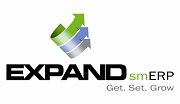 |
| Some products made of Leather... |
The leather manufacturing process can be divided into 3 main processes preparatory stages, tanning, and crusting. A further process, finishing, can be added into the leather processing sequence. All leathers do not receive finishing and thus, cannot be counted as a main process.
The customers of today demand the best quality of leather products at a competitive rate. At the same time as government rules become more strict, leather manufacturers have to invest more and more on disposal, storage,etc. What we need is a business solution that can streamline our business.
In this situation an ERP system on cloud can come to our rescue! ERP or Enterprise Resource Planning or Software for Leather Industry is a wizard tool for the leather industry. An ERP system can increase the efficiency of the industry, while it also helping you to manage and balance multiple projects and operations effectively. It is an on cloud software that helps us to streamline our business and helps us to work efficiently.
With industrial management functionalities an ERP system can manage from CRM to SCM and from HCM to HR management. An ERP system is a total solution with lightning speed for the leather industry.
- ERP can transform unstructured processes into routine transactions such as electronic approval of purchase orders based on predefined company policies.
- ERP can replace or reduce the human labour involved in processes, like matching of supplier invoices based on accepted purchase receipts.
- ERP can transfer information rapidly and with ease over large distances. It is now possible for various offices and factories of an organization to perform transactions and analysis on the same server, reducing geographical distances.
- ERP can help manufacturing companies in carrying out analysis such as: Forecasting of market demand based on statistical models; Capturing of hidden market trends through multi-dimensional analysis; Identification of potential improvement areas.
- ERP can bring a vast amount of detailed information into the process.
- ERP can enable changes in the sequence of task in the process, often allowing multiple tasks to be performed concurrently.
- ERP allows the capture and dissemination of knowledge and expertise to improve the process.
- ERP allows detailed tracking of task status, inputs and outputs.
If we do what we always did, we will get what we always got.Henry Ford


No comments:
Post a Comment
Thank you for your Comments.
ExpandERP Team